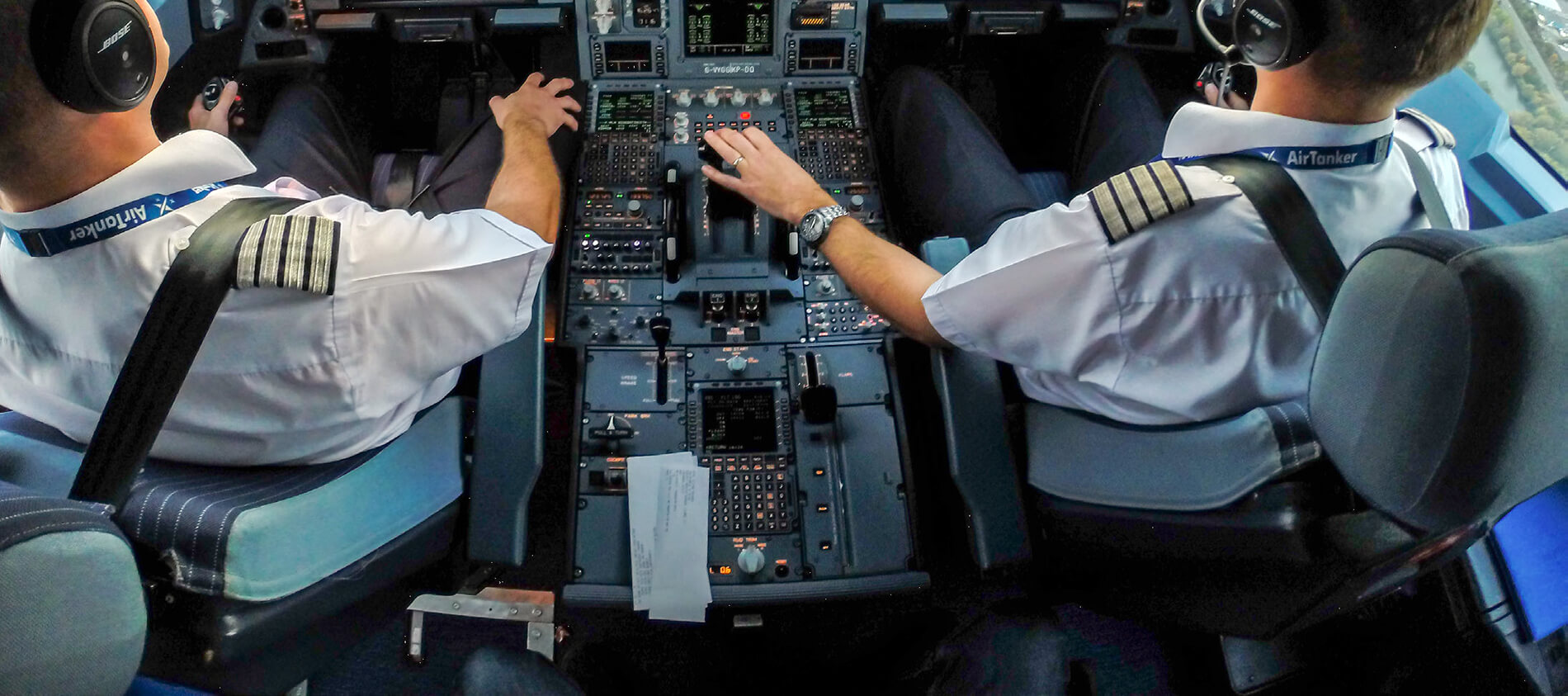In 2017 AirTanker launched its first ever Cadet Pilot Programme, offering a new route for commercial pilots to complete their training and join the company’s growing civil fleet as First Officers.
Head of Civil Training, explains how the programme works.
Last year we welcomed the first eight recruits into our Cadet Pilot Programme, an exciting milestone to say the least and two more have recently joined us in the first quarter of 2018, an exciting milestone to say the least! We launched the programme to support our Leasing business which has expanded, and we need a strong pipeline of talented pilots to support out charter operations around the world.
The market for new co-pilots is really buoyant right now! Many airlines in Europe tend to recruit cadets directly from the major flight schools taking on large numbers of pilots to support their short-haul operations. Our proposition is different and is tailored to our unique operations where we offer cadets the opportunity to fly the A330 wide-body aircraft, on a mix of short and long haul routes.
How the training works
Pilots who join us will already have their Commercial Pilot Licence and will have completed a multi-crew cooperation course. They come to us via two routes – some have chosen to do their training in a modular way, others have joined us from flight schools. In either case we are looking for the right mix of skills and personal attributes.
Of course, the need to have the technical capability, but we also need people with the inter-personal skills to fit in with out relatively small team. Our pilots are often working down route for days at a time, spending a lot of time with other members of the crew. It’s important that we find people who match our ethos.
When cadet pilots join us, we pay for the remainder of their training which will typically be over £40,000. In return, they are bonded to us for a minimum of three years.
Training includes type conversion so that they are qualified to fly the A300, plus on ETOPS (Extended Twin-Engine Operations) course. ETOPS is an operational approval that permits twin-engine aircraft to operate a route that is more than the usual one hour’s flying time from a landing site, in case there is a significant failure during flight.
Cadet pilots will also complete low-visbility operations training and then the final element is line training. Here, they fly a total of 50 sectors alongside a Training Captain. Each sector involves one take-off and landing and it is here where they will learn their trade in the operational environment. The last 4 sectors of the 50 are used as a final check before the cadet pilot becomes a qualified First Officer.
Career Progression
With all our First Officers joining us as cadet pilots we are very clear about the career path that AirTanker can offer. There are very few other airlines where newly-qualified First Officers have th chance to fly long-haul routes on a wide-body aircraft, for example.
The other side of the coin however is that the career path to become a Captain is significantly slower than it would be with major short-haul carriers. It’s important that we manage expectations and recognise that the Cadet Pilot programme will not suit everyone.
We believe the approach benefits both the individual pilot and AirTanker as a whole. It gives us an efficient and cost-effective way to bring talented pilots into the business, supporting the First Offices requirements or our fleet. We offer cadet pilots an attractive salary, plus the opportunity to fly global routes and gain valuable wide body experience. It’s only one element of our recruitment pipeline, but it plays an important role.
Training support
Prior to starting the Cadet Pilot Programme at AirTanker I gained significant experience whilst working with Easyjet who trained around 400 students every year.
We are lucky here at AirTanker that our pilot training team has significant experience from their past roles to support our new First Officers.
